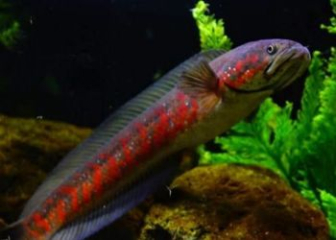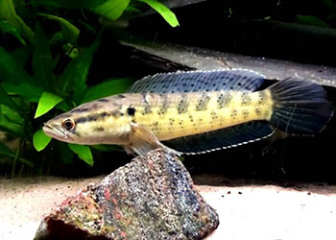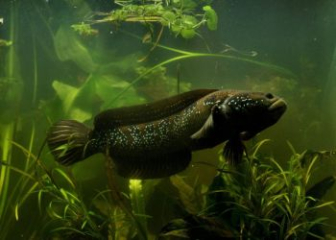Snakehead fish Channa harcourtbutleri - A to Z guide on how to raise it
Blog | by
Channa harcourtbutleri, a species endemic to Inle Lake in Myanmar, is a dwarf snakehead fish with a small size, gentle, calm, and adaptable.
Channa harcourtbutleri is a dwarf snakehead fish endemic to Inle Lake, Myanmar. It not only has a unique appearance but also has a gentle, pleasant, and adaptable temperament, suitable for those who like to raise quiet, silent fish but still create a highlight in the aquarium.
Although this fish is not popular in Vietnam at present, if you want to learn more about the habits and how to raise and care for the dwarf snakehead fish Channa harcourtbutleri, please follow the article below of ornamental snakehead fish !
Information about snakehead fish Channa harcourtbutleri :
| Scientific name | Channa harcourtbutleri |
| Common name | Myanmar Snakehead Fish, Harcourt Snakehead Fish, Burmese Dwarf Snakehead Fish |
| Surname | Channidae |
| Spend | Channa |
| Source | Inle Lake - Myanmar |
| Size | 15 - 20 cm |
| Behavior | gentle, mild |
Origin of snakehead fish Channa harcourtbutleri
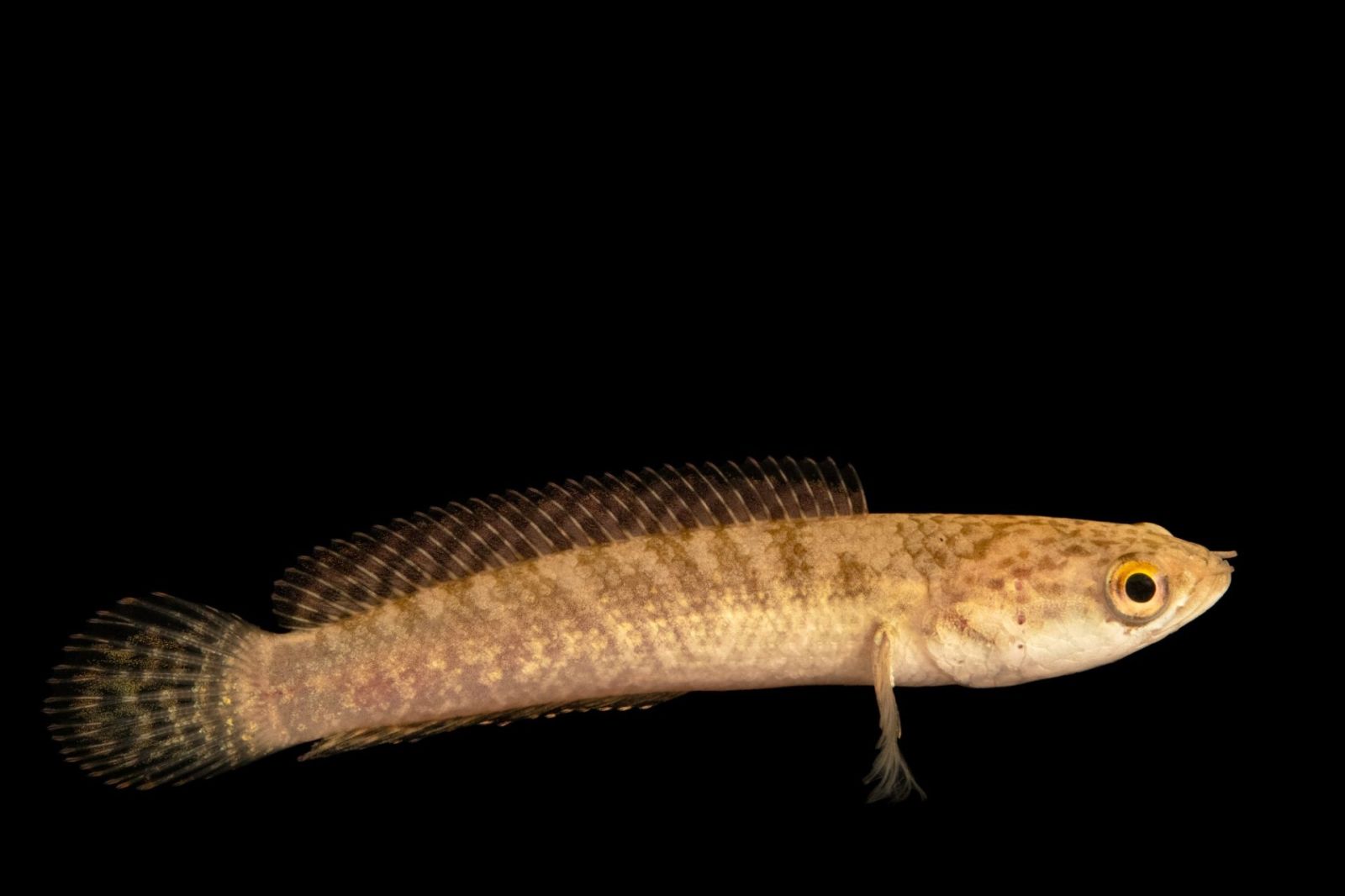
Channa harcourtbutleri, a fish endemic to Myanmar.
Channa harcourtbutleri, also known as Myanmar snakehead fish or Harcourt snakehead fish, is an endemic snakehead species found only in Inle Lake and small streams in Shan State in Eastern Myanmar (Burma), where the altitude is 1000 m above sea level and the climate is cool all year round.
Their habitat is mainly freshwater lakes with muddy bottoms, clear streams with many aquatic plants and gentle currents.
This fish was first discovered in 1901 by Boulenger, a British colonial official at the time, and was initially confused with Channa gachua due to its similar appearance, but it was not until 2000 that they were confirmed as a separate species.
Currently, Channa harcourtbutleri is quite rare in the wild and not common in the mass trade due to Myanmar's restrictions on the export of native fish.
Appearance of snakehead fish Channa harcourtbutleri

Details of the appearance of a dwarf snakehead fish Channa harcourtbutleri.
Channa harcourtbutleri is a rare dwarf snakehead fish and has a different appearance compared to other fish in the same snakehead family. Find out more details below!
- Size : 15 - 20 cm in sub-adult.
- Body : Elongated, cylindrical, slightly flattened, head larger than body.
- Color : The fish's body has a dark brown or olive brown background, with small black dots or faint black patches along the body, and the tail and dorsal fin have a light blue sheen.
- Eyes : Large, red.
- Dorsal fin : Extends from the body to the caudal peduncle.
- Pelvic & anal fins : Smaller but similar in length to dorsal fin.
- Caudal fin : Slightly rounded, with dark edges, slightly blue.
Snakehead fish Channa harcourtbutleri
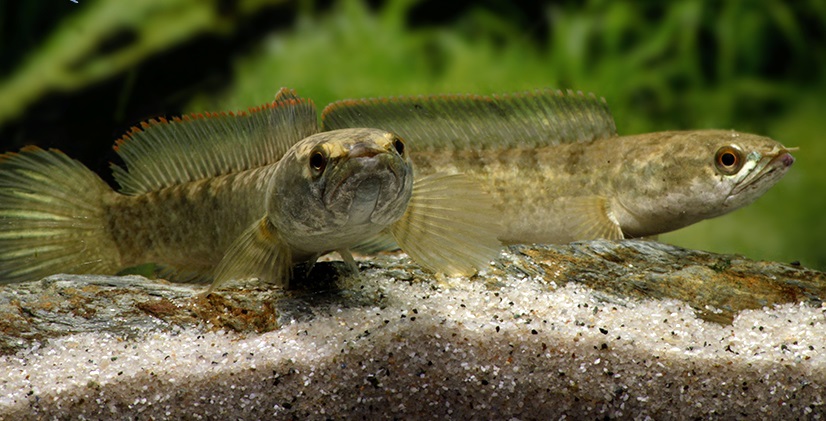
A pair of Channa harcourtbutleri.
Because Channa harcourtbutleri is an endemic dwarf snakehead fish originating from Inle Lake (Myanmar), it has many different habits and behaviors compared to other Channa species, specifically as follows:
Mild, slightly territorial
Harcourt snakeheads have a mild temperament, quite gentle compared to other snakehead species, you can keep them singly, in pairs or even in small groups in a large enough tank.
They also tend to occupy an area, territory for themselves but rarely attack other fish if the tank is large enough and has many hiding places.
Likes quiet environment, active at night
Channa harcourtbutleri prefers to live in quiet environments, dense vegetation, and many shelters, like the environment of Inle Lake. They are also mainly active at night, early in the morning or late at night, and during the day they mostly lie still in crevices of rocks, driftwood, and aquatic plants to rest.
Eat meat, can fast well
Like many other snakehead fish, Channa harcourtbutleri is a predatory and carnivorous fish. In the natural environment, they can eat small fish, crustaceans, insects, etc. In particular, they can fast for long periods of time without affecting their health. Thanks to this, this fish has a high survival instinct.
Reproductive behavior
Channa harcourtbutleri reproduces in pairs of 1 male - 1 female, they will swim close to each other, share territory, and forage together. Then, the female lays eggs in floating bubble nests, the male will fertilize and guard the nest until the fry hatch. Notably, in this species, both the male and female fish have the behavior of protecting the fry after hatching until they can forage for food on their own.
Detailed guide to raising snakehead fish Channa harcourtbutleri for beginners
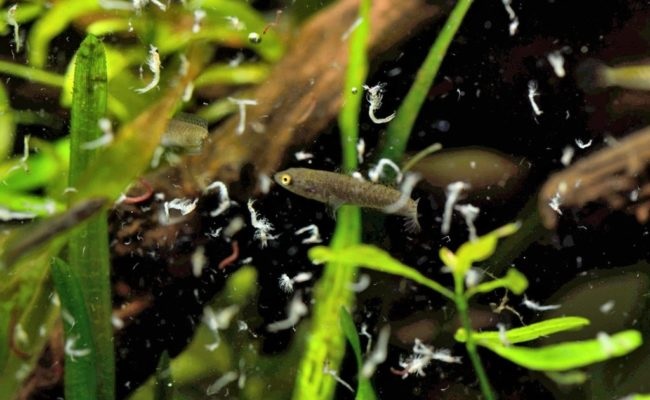
A baby Channa harcourtbutleri fish.
Right below, we will guide you on how to raise Channa harcourtbutleri snakehead fish in the most detailed and easy-to-understand way for beginners, including designing a tank, preparing water parameters, food, and disease prevention.
Prepare a suitable fish tank
To help Channa harcourtbutleri fish adapt quickly and grow well in an artificial environment, you need to prepare a suitable tank with conditions similar to the natural habitat of this fish species, specifically as follows:
- Size : Minimum 60 x 30 x 30 cm for 1 - 2 fish, if raised in groups, a volume of 100 liters or more is required.
- Cover : The tank needs a cover as this fish can jump out when startled.
- Water filtration system: Use a light filter to avoid creating strong currents.
- Aeration: Recommended.
- LED lights : do not use lights that are too bright, choose the type with soft, gentle light.
- Decoration : Plant many aquatic plants, driftwood, caves, dry almond leaves,...
Ideal water parameters
After creating a suitable aquarium, next you need to pay attention to water quality, ensuring the following basic criteria to create an ideal living environment for fish:
- Temperature : 22 - 26 degrees Celsius
- pH: 6.0 - 6.8
- Nitrat, NH3: 0 ppm.
- Dissolved oxygen : > 4 mg/l
Reasonable diet
Because Myanmar snakehead fish are carnivores, in captivity, you can feed them the following foods:
- Shrimp, cut into small pieces.
- Earthworms.
- Small bait fish (make sure to keep them clean to avoid spreading disease to the fish)
- Insects such as crickets, grasshoppers, locusts, superworms,...
- Frozen food.
Feeding frequency:
- Eat 1 - 2 times/day with adequate amount of food.
- Every week, fish should be fasted for 1 day to help the digestive system better.
Check water quality, clean tank periodically
To help keep the fish's living environment optimal, you need to pay attention to measuring parameters and changing water periodically, specifically as follows:
- Water change : Change 20 - 30% of the water in the tank every week.
- Clean the filter system : once a month or depending on the filter capacity.
- Check pH, temperature, and water parameters : at least 1-2 times per week or more if time permits.
- Observe fish behavior : Every day to detect any unusual signs.
Notes when raising together
Although Channa harcourtbutleri has a fairly mild temperament, when you want to keep them in the same tank, you need to pay attention to the following:
- Can be kept in groups of 3 - 5 if the tank is large enough and has plenty of hiding places.
- If you see any fish that is too aggressive, you need to separate them.
- Avoid keeping with smaller fish to avoid being eaten.
Common diseases in Channa harcourtbutleri fish and how to treat them
Although Channa harcourtbutleri has good fasting ability and high adaptability, if the environment is unstable, they are still susceptible to some diseases as follows:
| Disease name | Reason | Symptom | How to handle |
| Skin fungus, white spots |
Polluted water environment Sudden water change Fish are in heat shock, stress |
Fish have tiny salt-like spots on their bodies. Fish like to rub themselves against driftwood and rocks to feel more comfortable. Fish are lethargic and inactive. |
Increase the temperature to about 28 - 30 degrees Celsius for 2 - 3 days. Use fish antifungal medication according to the recommended dosage. Change water, ensure water quality. |
| Infected fish | Due to bacteria Aeromonas, Pseudomonas attack open wounds of fish. |
Fish appear many ulcers Fish stop eating, like to lie at the bottom, lazy to move |
Isolate sick fish Increase oxygenation and water filtration Use low doses of antibiotics for fish Take a salt bath for 10 - 15 minutes every day. |
| Gill fungus |
Caused by the parasites Dactylogyrus, Gyrodactylus causing gill fungus Due to dirty water environment, lack of oxygen |
Fish breathe rapidly, or open mouth Fish gills show signs of swelling, fish stop eating |
Bathe fish with diluted parasitic killer Enhanced filtration and oxygenation Ensure water quality. |
Price of snakehead fish Channa harcourtbutleri
Currently, the dwarf snakehead fish Channa harcourtbutleri is not popular in the Vietnamese ornamental fish market, so there is no exact information about their price. However, based on the rarity and price of other dwarf snakehead fish, the price of Channa harcourtbutleri will fall between 1,000,000 - over 2,500,000 VND/fish.
To know the most accurate price and clear advice, please contact directly the aquarium stores that sell this type of fish!
Snakehead fish image
If you want to see more pictures of the dwarf snakehead fish Channa harcourtbutleri in the wild or in captivity, don't miss the collection shared below!
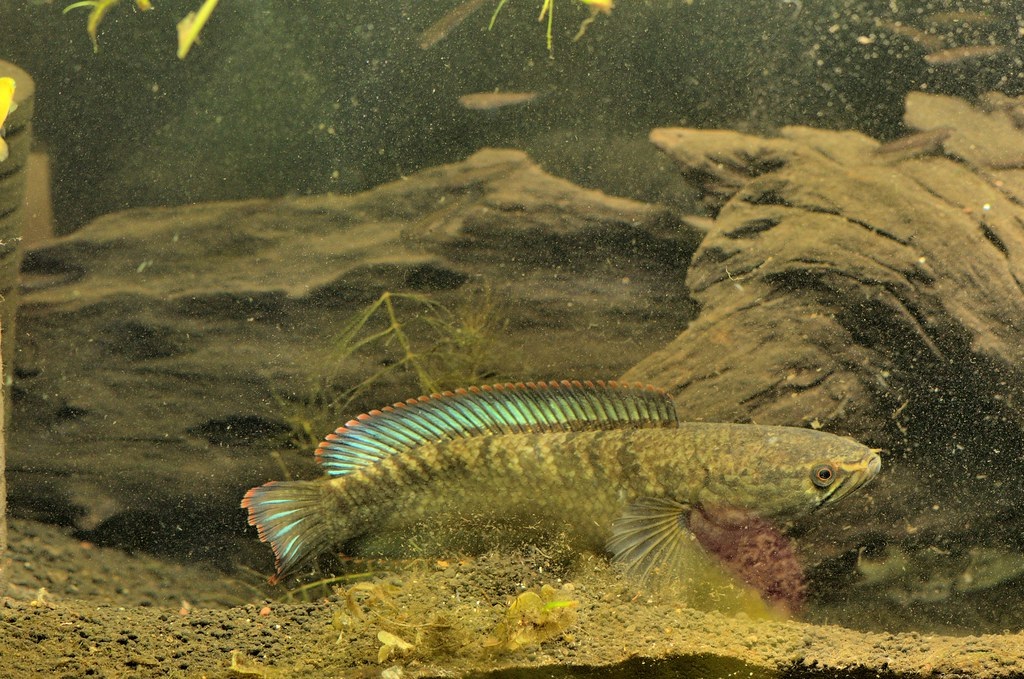
Channa harcourtbutleri fish hiding behind rotten tree roots.
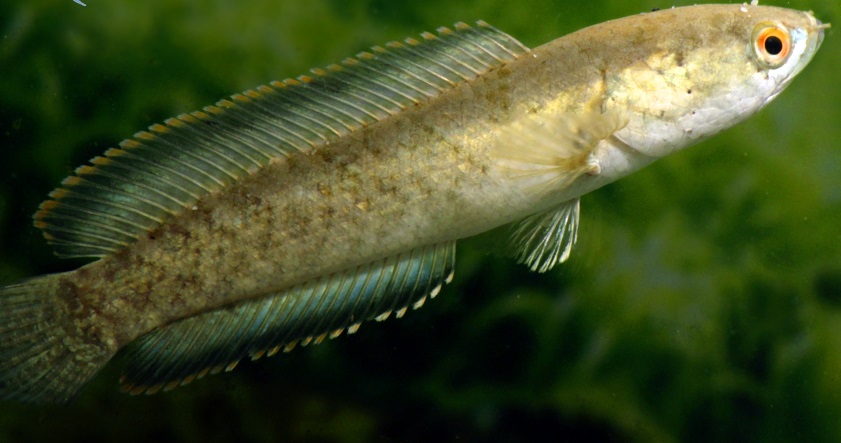
Eye-catching appearance of a Burmese dwarf snakehead fish.
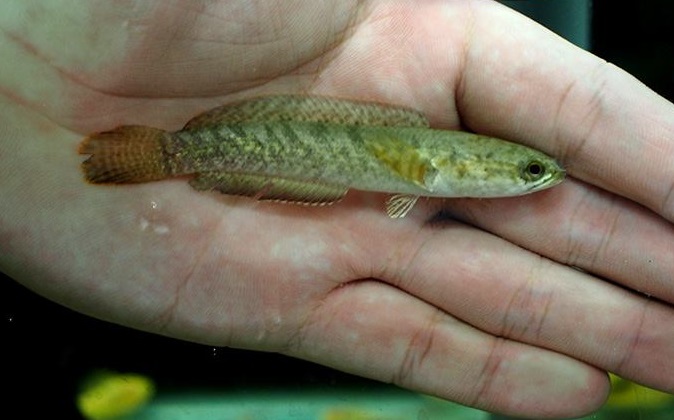
A Channa harcourtbutleri fish is lying on the hand of the keeper.
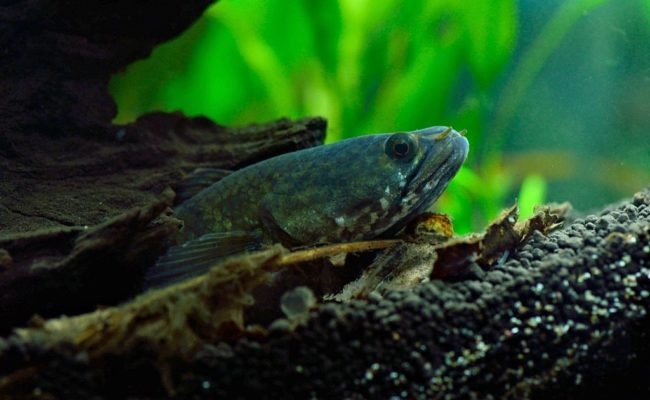
Dwarf snakehead fish Channa harcourtbutleri is hiding under a rock crevice.
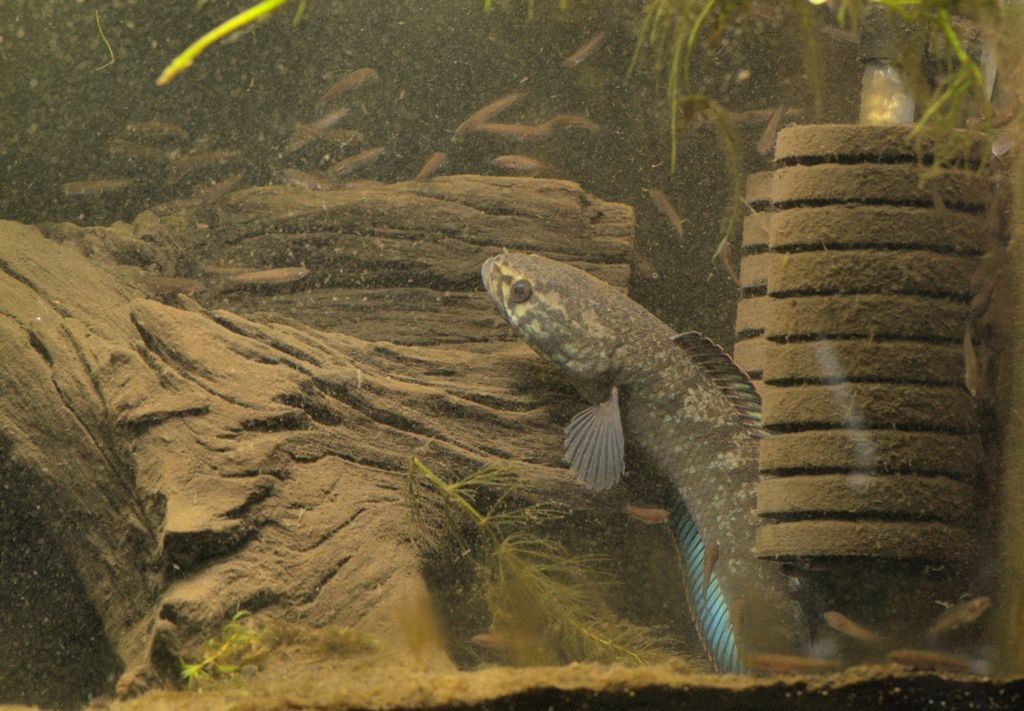
A Channa harcourtbutleri fish showing off in an aquarium.
Thus, through the article that snakehead.info shares above, you can understand more clearly about the snakehead fish Channa harcourtbutleri , this is indeed a rare and impressive ornamental snakehead fish, very suitable for long-time ornamental fish players. Although not too popular in Vietnam, I believe that with the appearance and pleasant temperament of this fish, they will be increasingly loved in the aquatic world.
Don't forget to visit our Blog section to learn about many different species of ornamental snakehead fish to understand and know how to raise and care for them best!
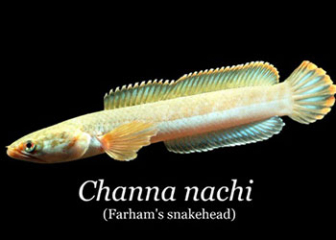



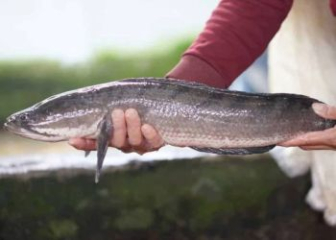
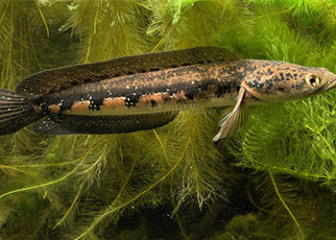

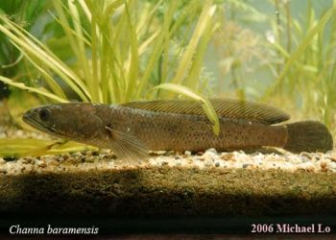
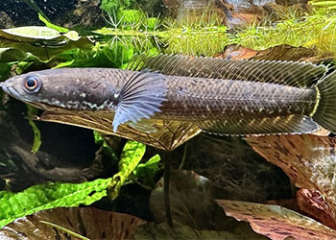
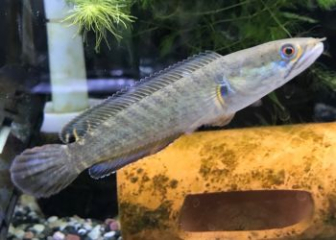
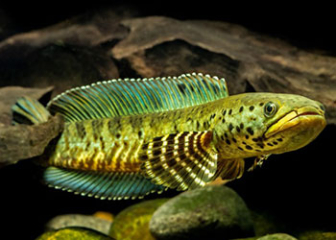
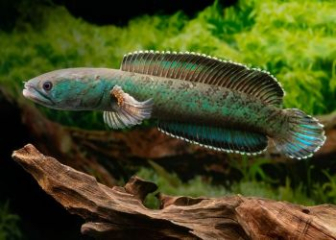

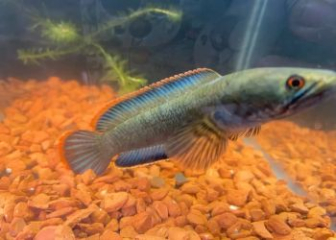
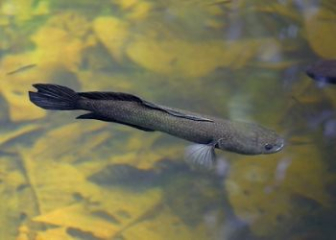
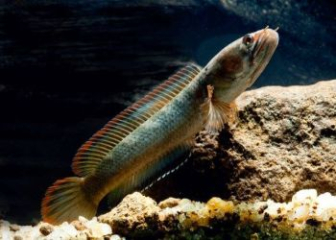
_350x250.jpg)
